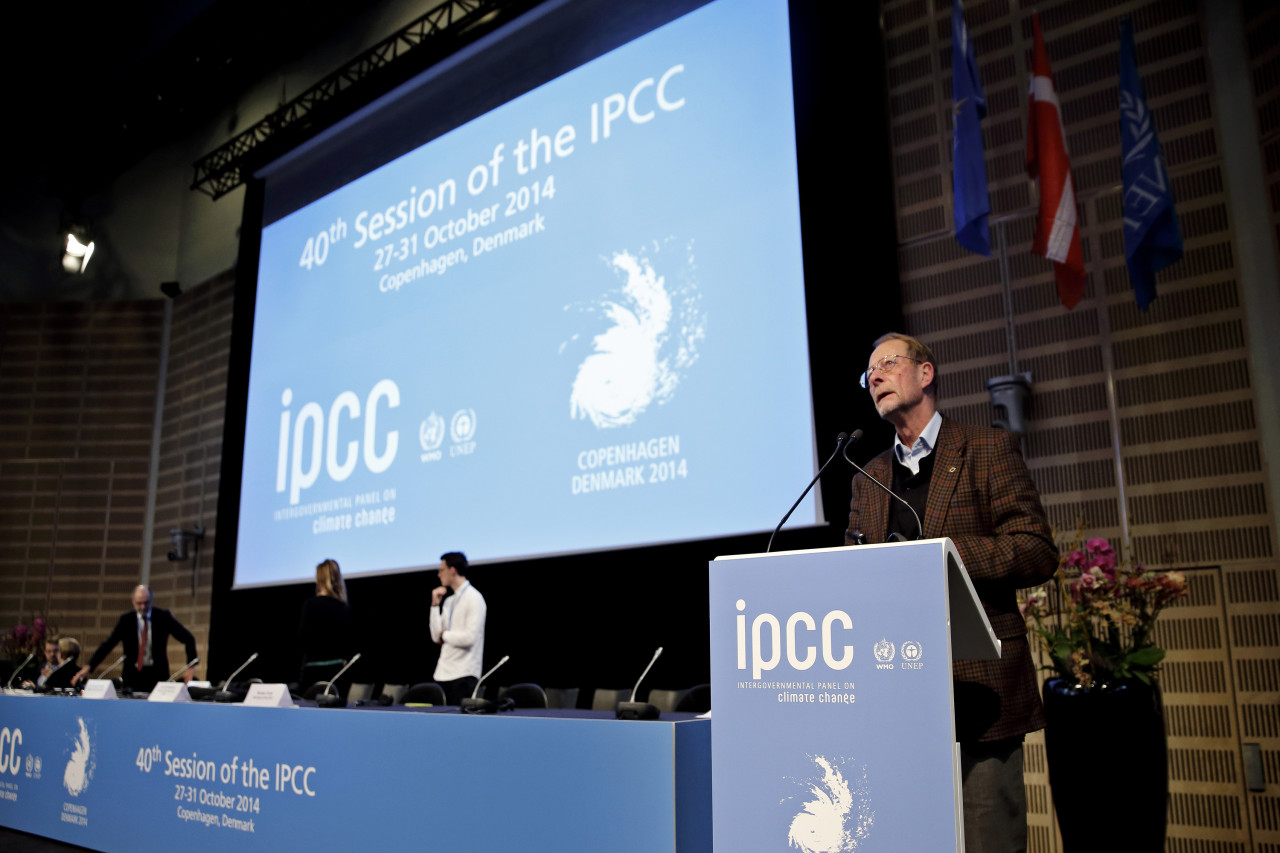Advertisement
A Dire Climate Change Report, And The Possibility For Change
ResumeWith guest host Jane Clayson.
“All we need is the will to change,” says the new UN climate report. Looking past the fear, looking to the solutions.

UN Secretary General Ban Ki Moon sent the world a double-edged message on Sunday: When it comes to climate change, “Time is not on our side.” We only have around thirty years to fix the way we live and do business. But he also said we can do it. “All we need is the will to change.” While, there’s plenty of despair all round, There are men and women --scientists, sociologists, politicians—who work daily to map out solutions –basically, to map out the planet’s salvation. What now? Where do we go from here? This hour, On Point: The plans to solve climate change.
-- Jane Clayson
Guests
Andy Revkin, writer for the New York Times' Dot Earth blog. Senior fellow at Pace University's Pace Academy for Applied Environmental Studies. (@revkin)
Constantine Samaras, assistant professor of civil and environmental engineering at Carnegie Mellon University. (@CostaSamaras)
Anthony Leiserowitz, research scientist and director, Yale Project on Climate Change Communication. (@ecotone2)
Eileen Claussen, founder and former president of the Center for Climate and Energy Solutions. Director of the Office of Atmospheric Programs at the EPA in the George HW Bush and Ronald Reagan administrations.
From The Reading List
IPCC: Climate Change 2014 Synthesis Report -- "There is very high confidence that maximum global mean sea level during the last interglacial period (129,000 to 116,000 years ago) was, for several thousand years, at least 5 m higher than present and high
confidence that it did not exceed 10 m above present. During the last interglacial period, the Greenland ice sheet very likely contributed between 1.4 and 4.3 m to the higher global mean sea level, implying with medium confidence an additional contribution from the Antarctic ice sheet. This change in sea level occurred in the context of different orbital forcing and with high-latitude surface temperature, averaged over several thousand years, at least 2 °C warmer than present."
New York Times: Panel’s Latest Warming Warning Misses Global Slumber Party on Energy Research — "The new synthesis tends to echo the panel’s earlier reports on global warming mitigation options, implying that a price on carbon and some shifts in policy (subsidies, for instance) are all that’s needed for an swift and affordable transition from conventional use of fossil fuels. But without a substantial boost in basic research and development and large-scale demonstration projects related to technologies like mass energy storage, capturing and storing carbon dioxide, grid management and a new generation of nuclear plants, it’s hard to see timely progress."
The Wall Street Journal:U.N. Climate Change Report Offers Stark Warnings on Global Warming -- "Climate change is happening, it is almost entirely man’s fault and limiting its impacts may require reducing greenhouse gas emissions to zero this century, the U.N.’s panel on climate science said Sunday. The fourth and final volume of the Intergovernmental Panel on Climate Change’s giant climate assessment didn’t offer any surprises, nor was it expected to, since it combined the findings of three earlier reports released in the past 13 months."
This program aired on November 6, 2014.